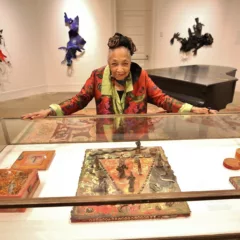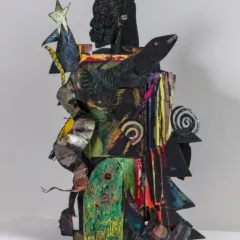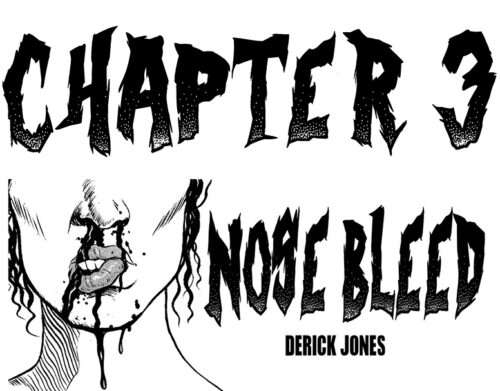[Natalia gives us some background on the long-lived, accomplished Bernstein, and offers a concise review of the artist’s retrospective. — the Artblog editors]
Currently on view at the Woodmere Art Museum, Theresa Bernstein: A Century in Art is the first retrospective devoted to the career of the Polish-American artist, who lived to an astounding 112 years of age and painted consistently for 10 decades. With a few exceptions, the retrospective focuses primarily on Bernstein’s early paintings, completed in the 1910s and ’20s, offering a unique glimpse into the artistic development of this otherwise marginalized figure.
Bernstein’s early years and work
Born in Krakow, Poland, Bernstein came to the United States when she was only one-and-a-half years old. Her family settled in Philadelphia, where she studied art at the Philadelphia School of Design for Women (now Moore College of Art & Design) and later at the Pennsylvania Academy of the Fine Arts. Following the completion of her education, Bernstein moved to New York City, exhibiting in various group shows alongside members of the Ashcan School of American Realism, including Robert Henri, John Sloan, and Edward Hopper. Additionally, Bernstein was a founding member of the Philadelphia Ten, a group of women artists active from 1917 to 1945.

The majority of the retrospective is devoted to Bernstein’s early years, consequently presenting a somewhat discontinuous artistic vision characteristic of a young painter exploring different subjects and stylistic modes. Several works embrace the journalistic realism of the Ashcan School–particularly her engrossing “Readers” (1914), which features a trio of gentlemen absorbed in books at the New York Public Library–as well as her “Suffragette Parade” (1915). Other experiments fall flat–her “Summer Picnic” (1919), depicting a male and a female figure lunching in deshabille, attempts an allegorical celebration of her marriage to painter William Meyerowitz that references Courbet, Manet, and Cezanne in a bizarre and unsuccessful composition.
But failed experiments are part of every artist’s career. By the 1930s, Bernstein had developed a more consistent style, painting scenes of American life and other subjects in an expressive, gestural style. Unfortunately, these later works are scantily represented in the exhibition. Yet despite its discontinuity, Bernstein’s retrospective remains an impressive testament to her tenacity in light of the difficult social circumstances of the 20th century that often prevented female artists from achieving critical success.

With this exhibition, curator Gail Levin has attempted to rescue Bernstein from the margins, asserting that she has been unfairly “erased” because of her gender and Jewish faith. Though it remains to be seen whether Bernstein will be added to the canon of American painting, A Century in Art presents a singular exploration of a female artist struggling to find her voice in a medium dominated by men.
Theresa Bernstein: A Century in Art is on display at the Woodmere Art Museum, 9201 Germantown Ave., Philadelphia, PA, from July 26, 2014 – Oct. 26, 2014.










